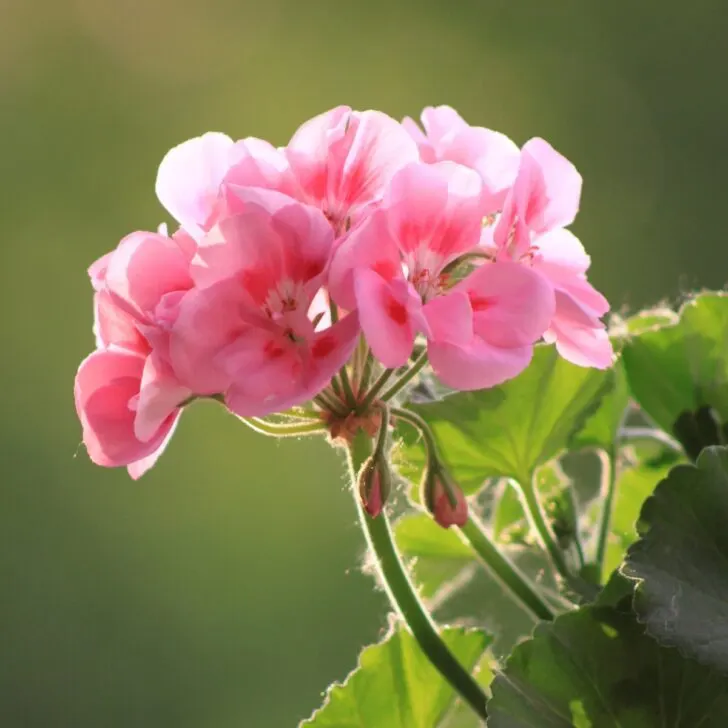Get all my tips and tricks for growing coleus from seed, and create a colorful shade garden display this season for just a few dollars!
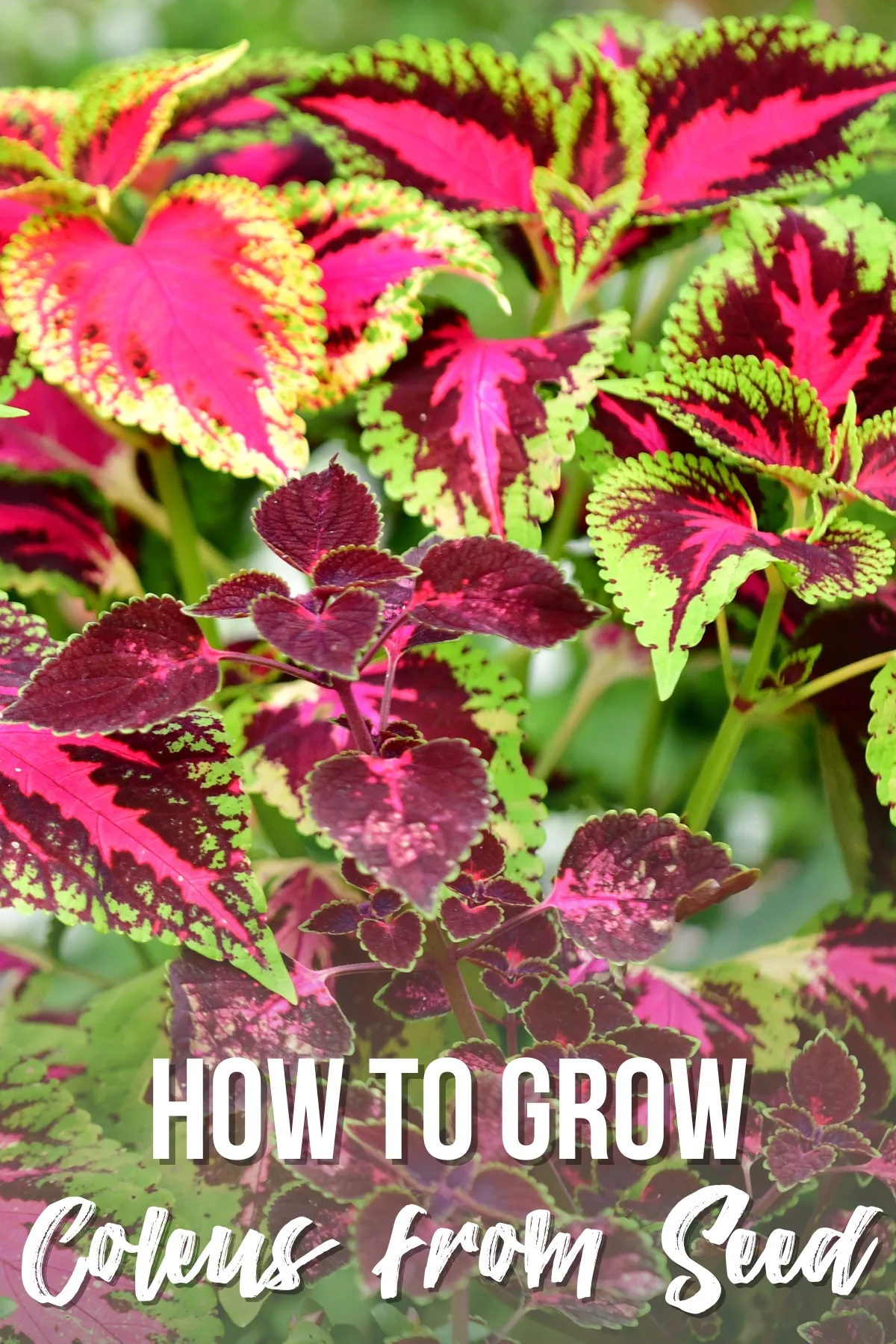
Coleus is a vibrant and versatile ornamental plant known for its stunning foliage in an array of colors, patterns, and textures. It's a staple of my shade garden, bringing bright pops of color to the green backdrop of hostas and ferns.
While it's possible to propagate coleus through cuttings, growing these beauties from seed allows you to create large drifts of color for just a few dollars. The varieties I'm growing this year feature bright pink centers that look gorgeous paired with shade loving flowers like these Saxifraga Dancing Pixies.

Today I'm sharing all my tips and tricks for growing coleus from seed, so you can add dozens of these beautiful foliage plants to your garden this season!
This post contains affiliate links for your convenience. Purchases made through these links may earn me a small commission at no additional cost to you.
Types of Coleus
Coleus is known for its incredible diversity in terms of color, patterns, and growth habits. Some are brightly colored and trailing, while others are more muted and upright. Here's how to choose the perfect coleus variety for your garden or indoor space.
Color Variations and Leaf Patterns
Coleus plants come in a wide array of colors, including shades of red, pink, purple, orange, yellow, green, and even near-black. The leaves often showcase multiple colors and can exhibit fascinating patterns with veined patterns, blotches and margins on the leaves.
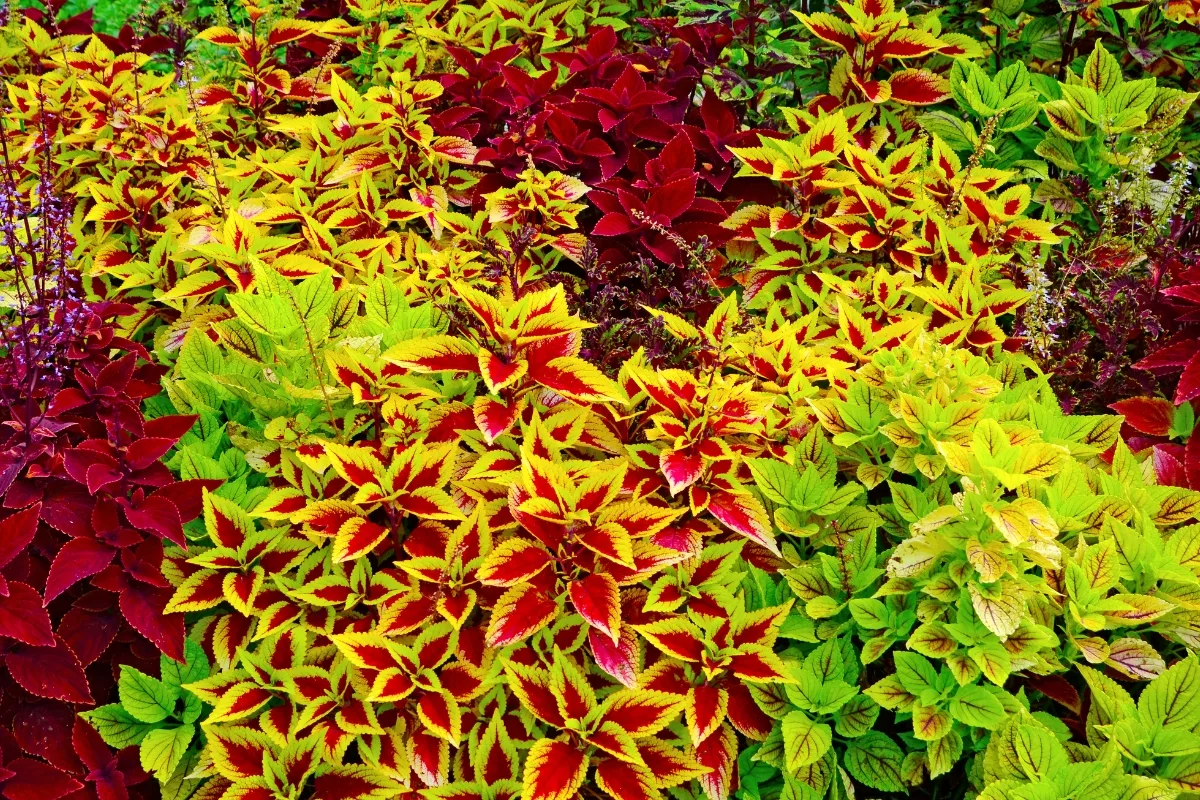
Size and Growth Habits
Coleus plants have a variety of sizes and growth habits, making them suitable for different garden settings and container arrangements.
- Small and compact varieties: These coleus plants typically grow up to 12-18 inches in height, making them perfect for borders, small garden spaces, or container gardening.
- Medium-sized varieties: Growing between 18-24 inches tall, medium-sized coleus plants can be used in mixed plantings, as focal points in garden beds, or as a stunning addition to indoor plant collections.
- Large and tall varieties: With heights of 24-36 inches or more, large coleus plants make a bold statement when used as a backdrop in garden beds, as centerpieces in large containers, or as standalone specimens in the landscape.

When choosing the right coleus varieties for your garden, consider the colors and leaf patterns that will complement your existing plants and design aesthetic. Also, take into account the size and growth habits of the coleus plants to ensure they will thrive in their intended space.
This year, I'm growing two different types of coleus with similar color and leaf patterns, but different heights. The shorter one is Wizard Rose coleus, which stays about a foot tall, and Kong Rose is much larger. Both have bright pink centers, which will provide continuity of color and pattern in my shade garden.

How to Plant Coleus Seeds
Have your coleus seeds picked out? Here's how to plant them!
Timing
Start your seeds indoors approximately 8-10 weeks before the last expected frost date in your area. This will give your seedlings ample time to grow strong and establish a healthy root system before being exposed to outdoor conditions.
If you prefer to sow coleus seeds directly outdoors, wait until the danger of frost has passed and soil temperatures have warmed to at least 60°F. Keep in mind that direct outdoor sowing may result in a slightly shorter growing season and a later display of vibrant foliage.
Preparing the Seed Starting Mix
Moisten the seed starting mix with water until it's damp but not overly saturated. The soil should hold its shape when formed into a ball but not dripping water when squeezed.

Fill your Seed Trays or Pots
Fill your clean seed trays or pots with the pre-moistened seed starting mix, pressing it down gently to remove any air pockets. Leave approximately ¼-inch of space from the top of each cell or pot to allow room for watering.

Sow your Seeds
Coleus seeds are small, black balls that are a little tricky to handle. I like to pour them into a small bowl so I can easily scoop out one or two at a time.

Sprinkle one or two coleus seeds into each cell or pot, gently pressing them onto the surface of the seed starting mix. Coleus seeds require light to germinate, so do not cover them with soil.

Make sure you label your seed tray, so you remember what you planted! I really like this waterproof marker that doesn't fade or wear off.
Water, Temperature and Humidity
Using a fine mist spray bottle or a gentle watering can, water the seeds to ensure the soil remains evenly moist. Avoid overwatering, as this can lead to seed rot or fungal issues. Vermiculite can help maintain moisture levels while also preventing algae growth.
To maintain humidity during germination, cover the seed trays or pots with a humidity dome or plastic wrap. Be sure to remove the cover once seedlings emerge to prevent the growth of mold and mildew.
Coleus seeds germinate best in temperatures between 70-75°F. Maintaining a consistent temperature will speed up germination and ensure strong, even growth. You can use a seedling heat mat to keep the trays warm if the ambient temperature of the room is too cold.

Caring for Coleus Seedlings
Once your coleus seeds have germinated and started to grow, it's important to provide proper care to ensure healthy seedling development.
Temperature and Humidity
After you see little sprouts poking out of the soil, remove the tray from the heat mat. Ensure good air circulation with a small fan to discourage mold or algae growth. I use these clip-on fans that are attached to the sides of my grow light shelves right at soil level.
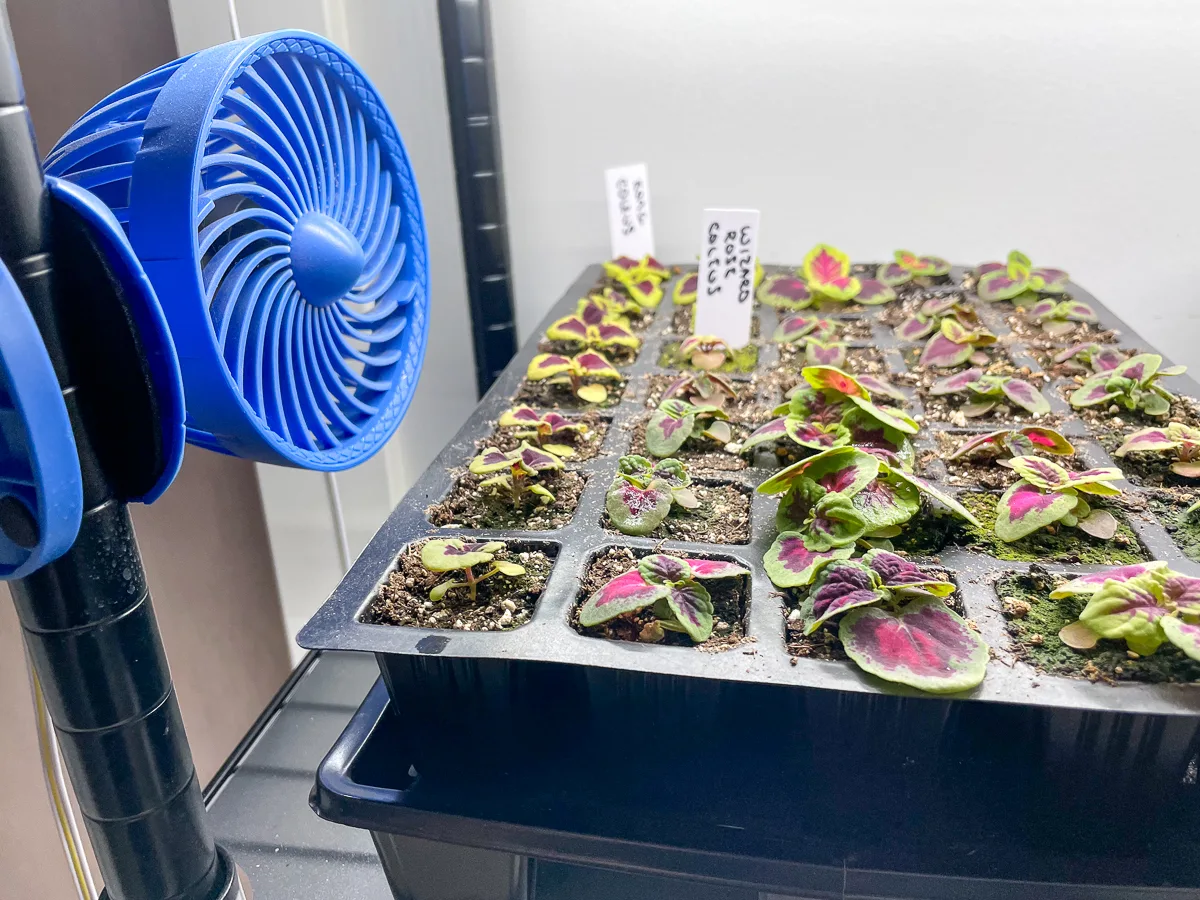
Watering and Fertilizing
Keep the soil consistently moist but not waterlogged, allowing the surface to dry slightly between waterings. Once my seedlings have put on a bit of growth, I fill the reservoir of these self-watering trays that allow the roots to soak up water from the bottom.
Begin fertilizing your coleus seedlings with a balanced, water-soluble fertilizer diluted to half strength every two weeks once they have developed at least two sets of true leaves. This will provide the necessary nutrients for strong growth and vibrant foliage color.
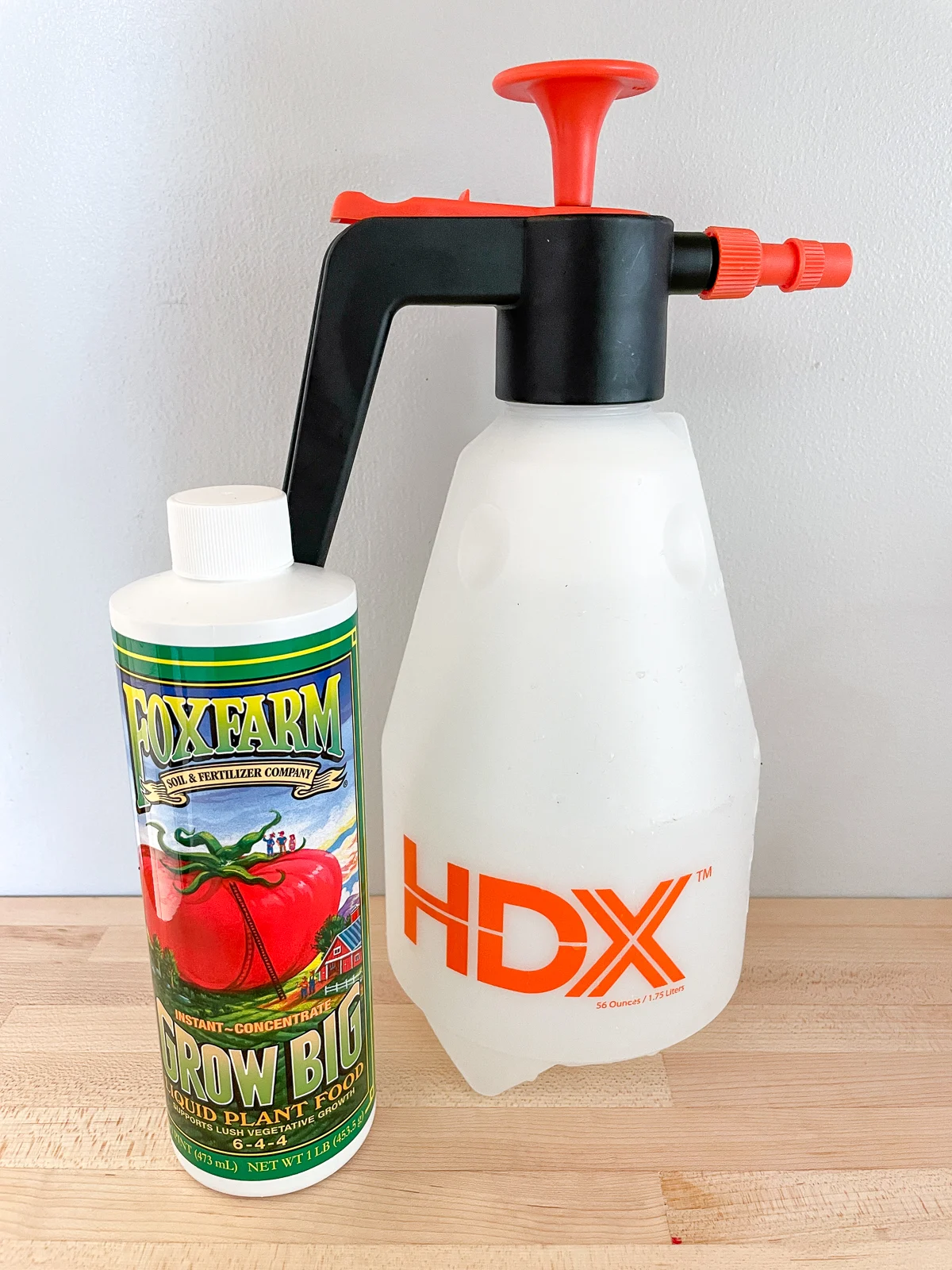
Provide Adequate Light
Coleus seedlings require ample light to grow strong and healthy. Even though the mature plants require filtered shade, the seedlings will typically need more light for optimal growth.
If your coleus seedlings are growing near a bright, south-facing window, rotate the trays or pots regularly to ensure even light exposure and prevent the seedlings from becoming leggy or reaching toward the light source.
If using artificial grow lights, maintain a distance of 4-6 inches above the seedlings and adjust as they grow. Provide 14-16 hours of light per day, and ensure the lights are turned off for at least 8 hours each night to give the plants a rest period.

Pruning and Pinching Coleus Seedlings
Pinch back the tips of your coleus seedlings when they reach 4-6 inches in height or have developed at least three sets of true leaves. This will promote bushier growth, resulting in fuller, more attractive plants.
Regularly inspect your coleus seedlings and remove any weak, leggy, or damaged growth. This will help direct the plant's energy toward producing strong, healthy foliage and reduce the risk of diseases or pests.
If there's more than one seedling growing in a cell, you can either transplant one of them into an empty cell, or thin the weaker plant out by cutting it at ground level. This will allow each plant to get all the sunlight and nutrients it needs without competing with its neighbor.

Transplanting Coleus Seedlings
Once your coleus seedlings have grown strong and the danger of frost has passed, it's time to transplant them outdoors. But you can't just yank them out of their nice, warm indoor environment and expect them to thrive! Here's how to ensure that your seedlings will adapt well to their new home in the garden.
Hardening Off Seedlings
To prevent transplant shock, acclimate your coleus seedlings to outdoor conditions by gradually increasing their exposure to sunlight, wind, and fluctuating temperatures over a period of 7-10 days. Begin by placing them in a shaded, sheltered location for a few hours each day, then slowly increase the amount of time and sunlight exposure.
At this point in the growing season, I'm moving several trays of seedlings outside to the shady side of our deck to harden off every day. Our weather is finally warming up enough that I can start putting these coleus and petunias I grew from seed in the ground soon!

Monitor your seedlings closely during the hardening off period and bring them indoors if frost or severe weather is predicted. By the end of the acclimatization process, your seedlings should be able to withstand the sunlight and wind environment where you intend to plant them.
Choose the Right Location
Choose a spot in your garden with well-draining soil and enrich it with organic matter, such as compost or well-rotted manure, to improve nutrient content and soil structure. Coleus plants prefer a slightly acidic to neutral soil pH (6.0-7.0).
Coleus plants can grow in both sun and shade, though the intensity of their foliage color may vary depending on light exposure. Select a location that provides the desired amount of sunlight for the specific coleus varieties you're planting. Keep in mind that intense afternoon sun may cause some coleus varieties to fade or scorch.
Plant your Seedlings
Plant your coleus seedlings at the same depth as they were in their seed trays or pots, ensuring that the root ball is fully covered with soil. Space seedlings according to their mature size to allow for proper air circulation and growth.

Water your newly transplanted coleus seedlings thoroughly to help them settle into their new environment and establish strong root systems. Apply a balanced, water-soluble fertilizer at half strength to give them a boost and encourage vibrant foliage color. Continue fertilizing every two weeks throughout the growing season.
Growing coleus from seed allows you to explore the vast array of colors, patterns, and growth habits that these stunning plants have to offer, at a fraction of the cost. With patience and a bit of nurturing, you'll be rewarded with a vibrant and eye-catching coleus garden that showcases the true beauty of these versatile plants.
Check out these other plants you can grow from seed!



